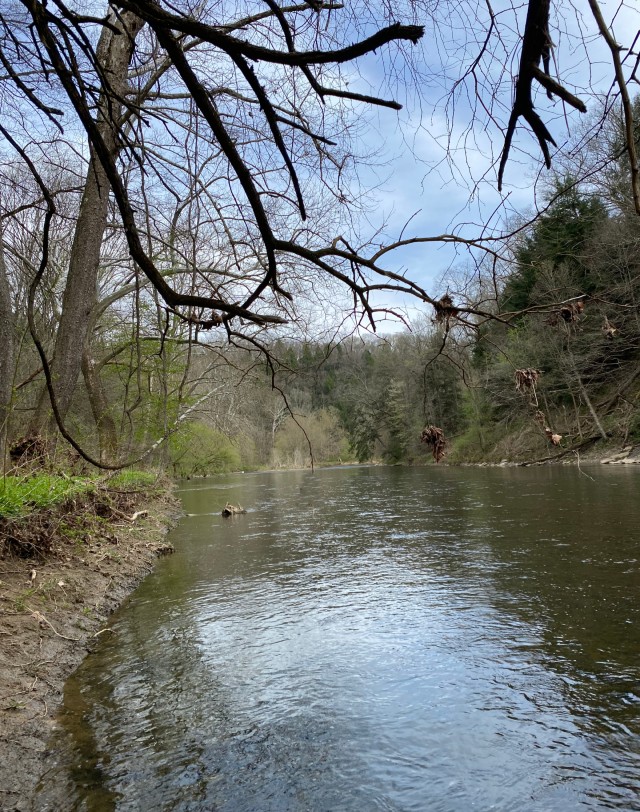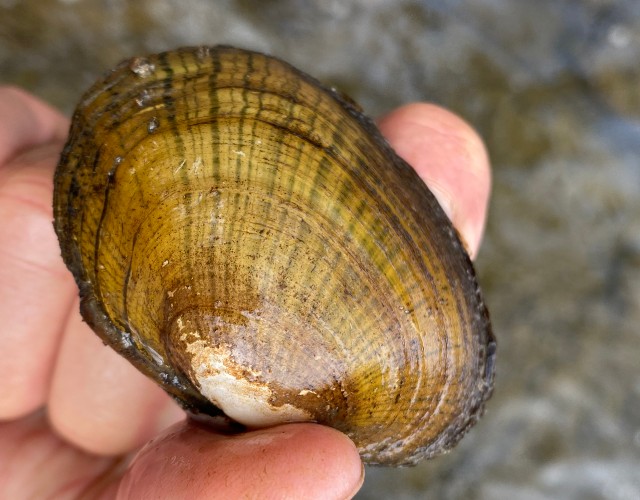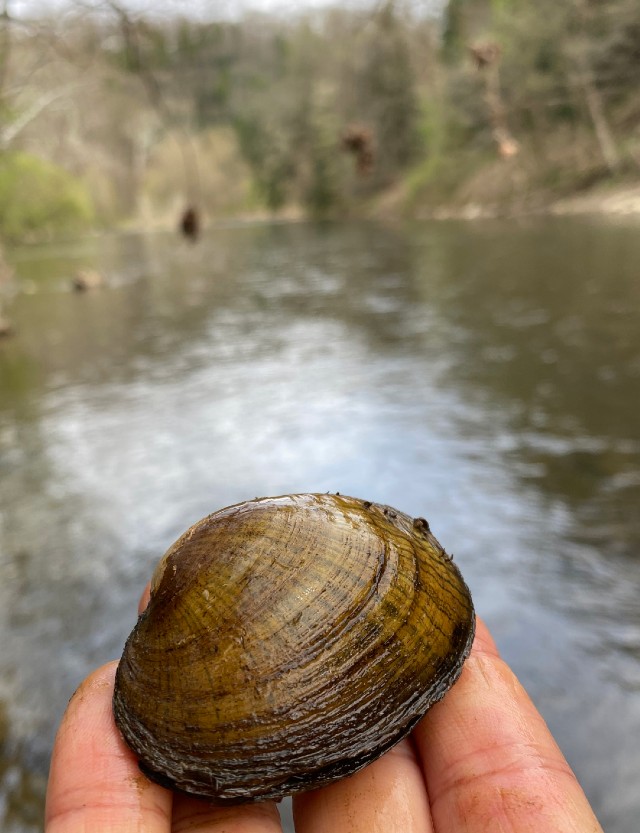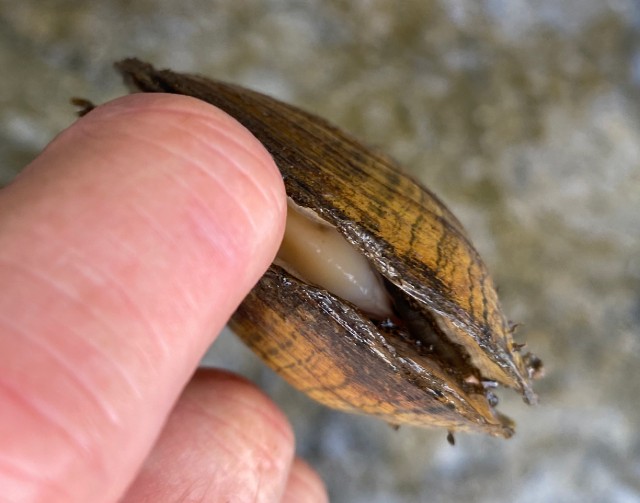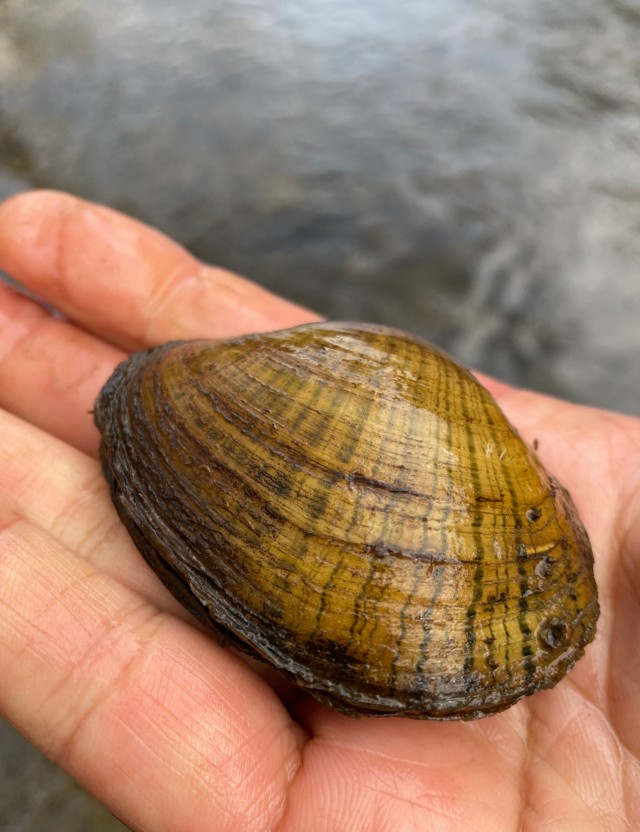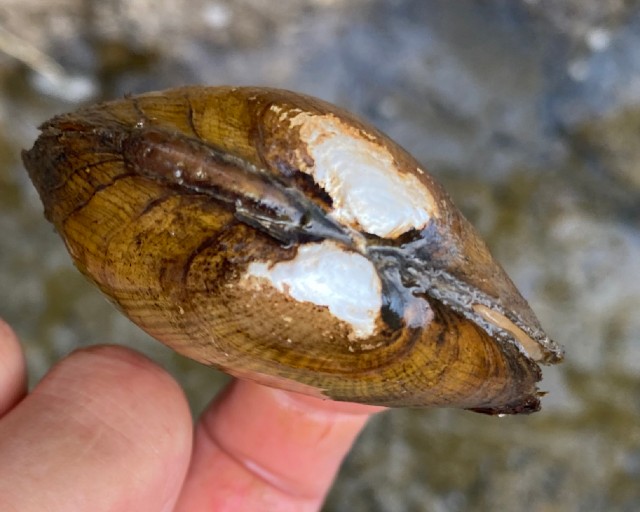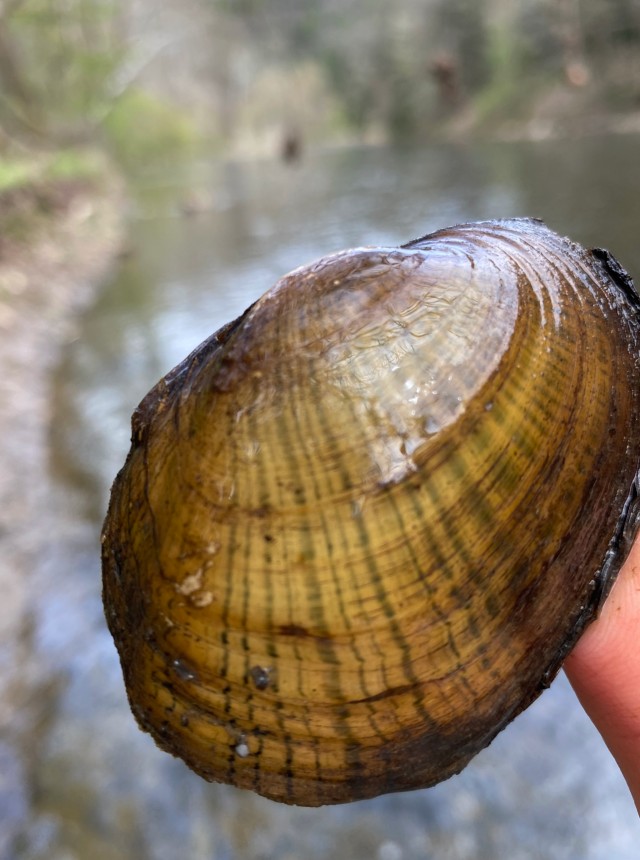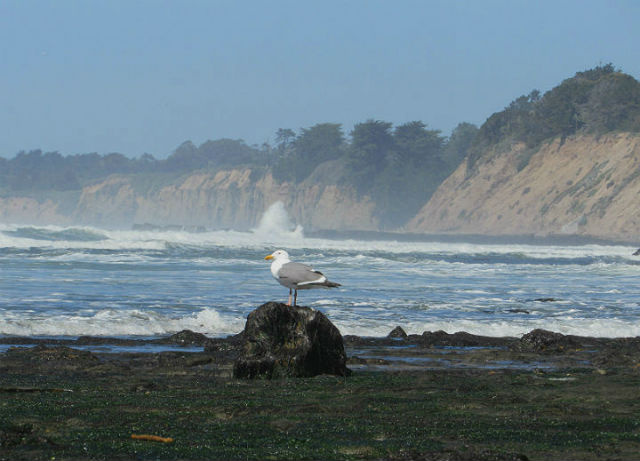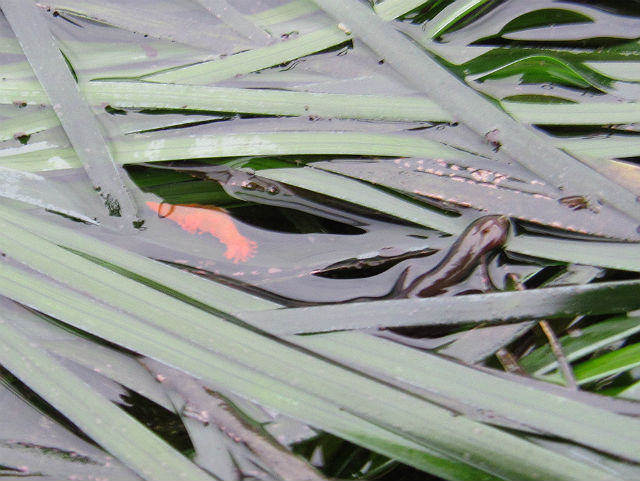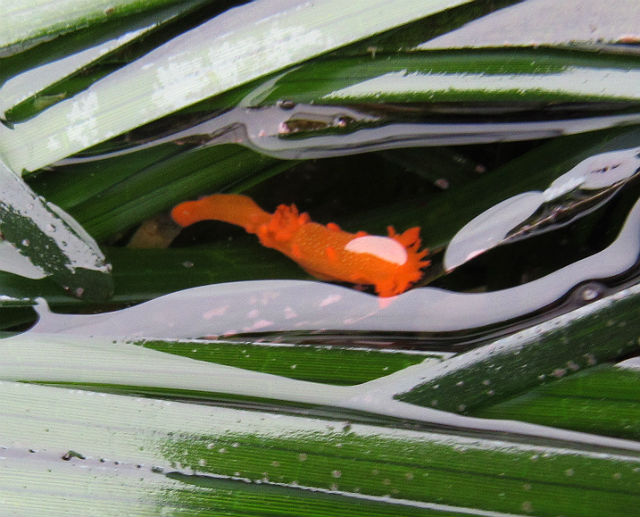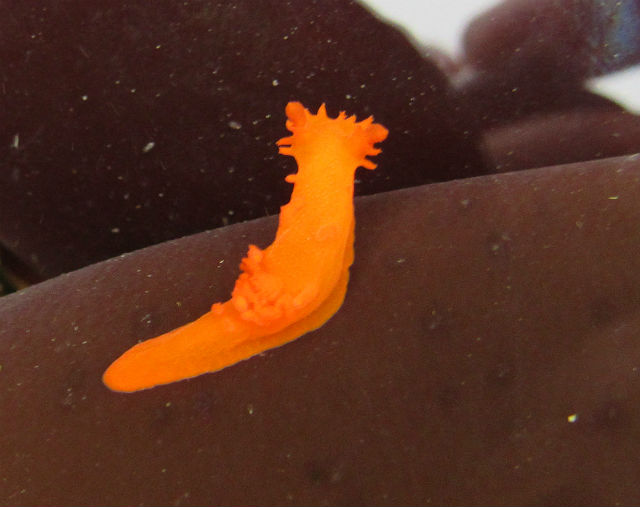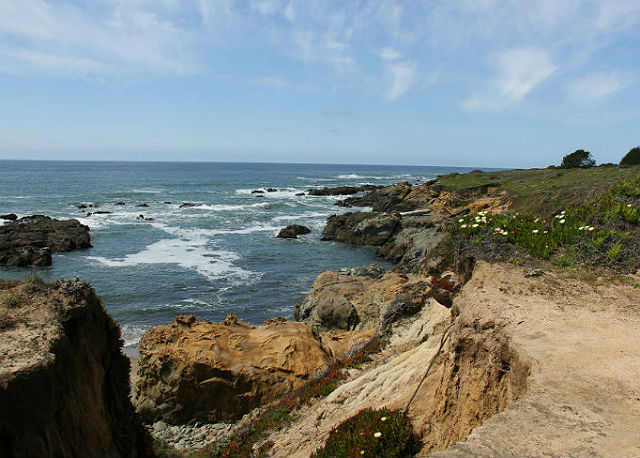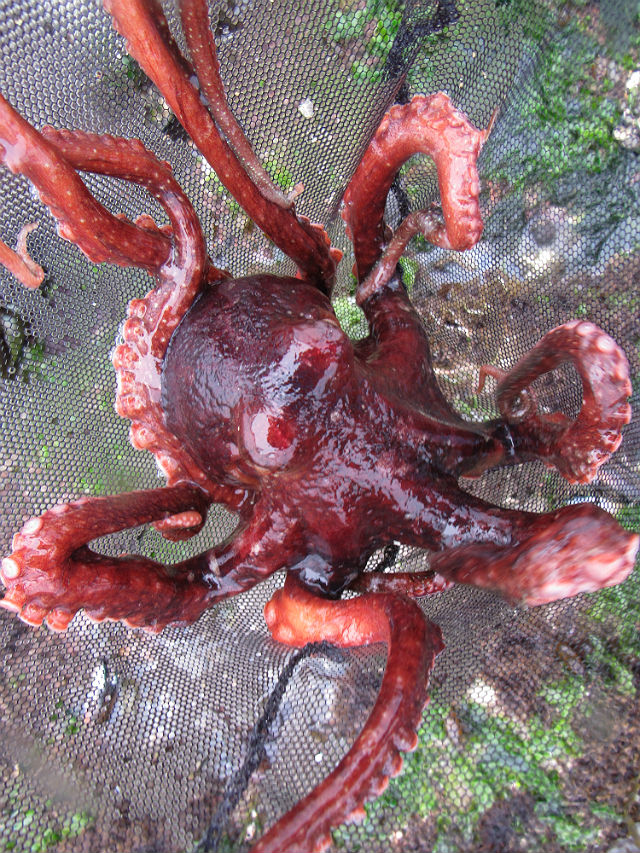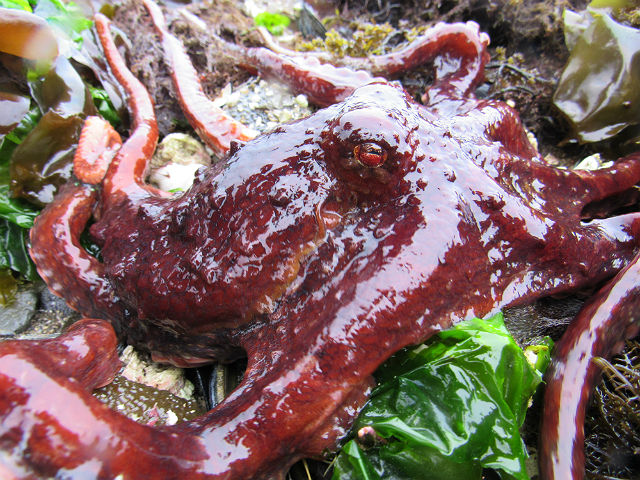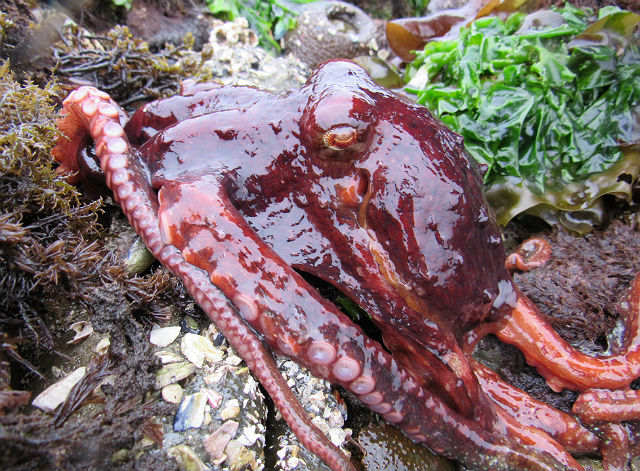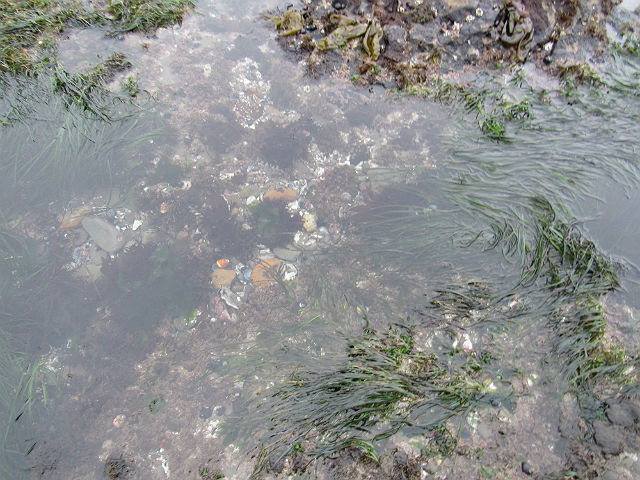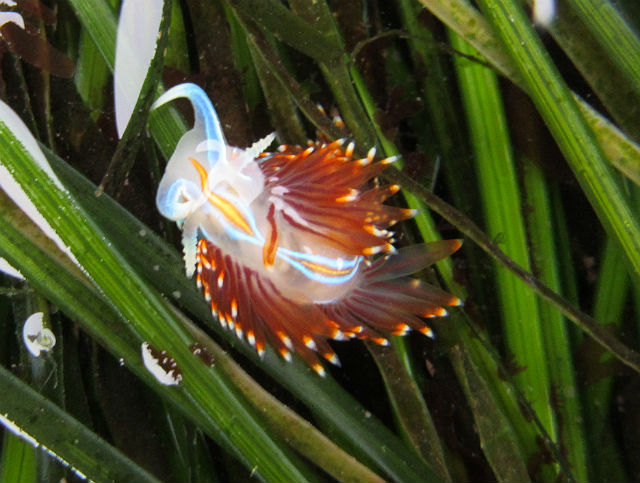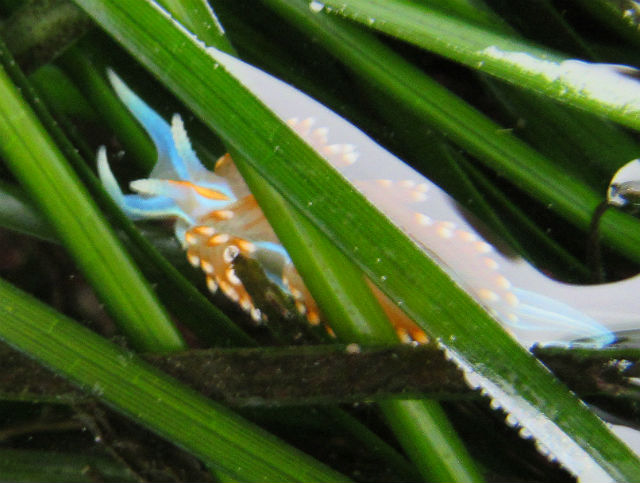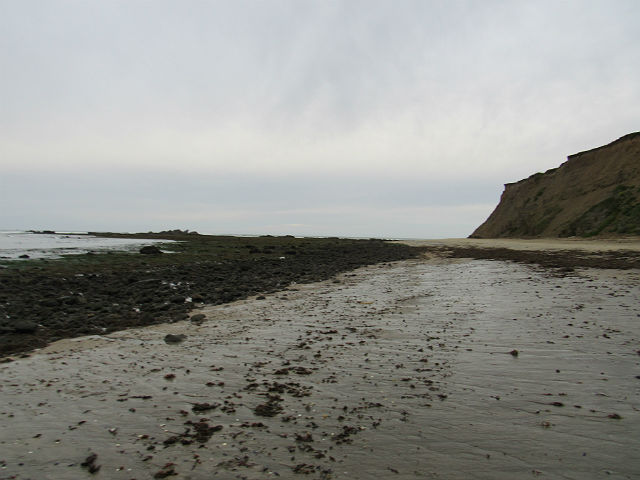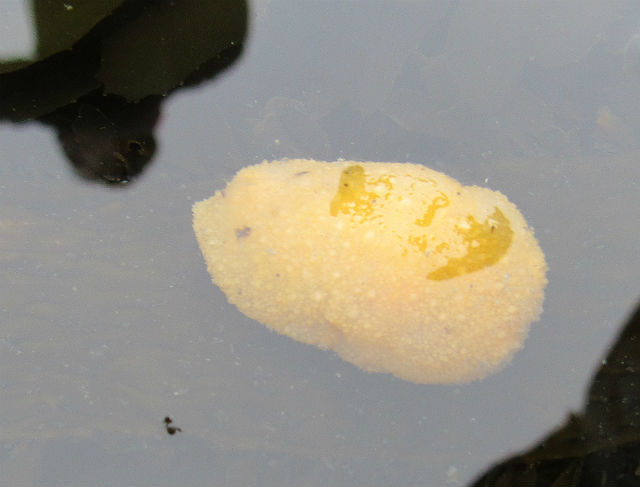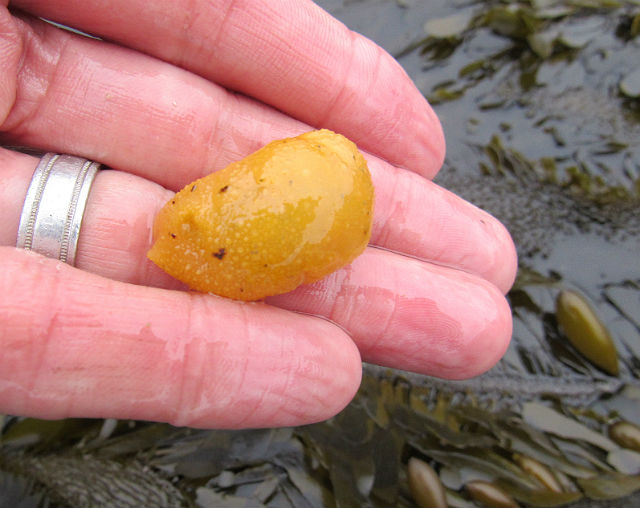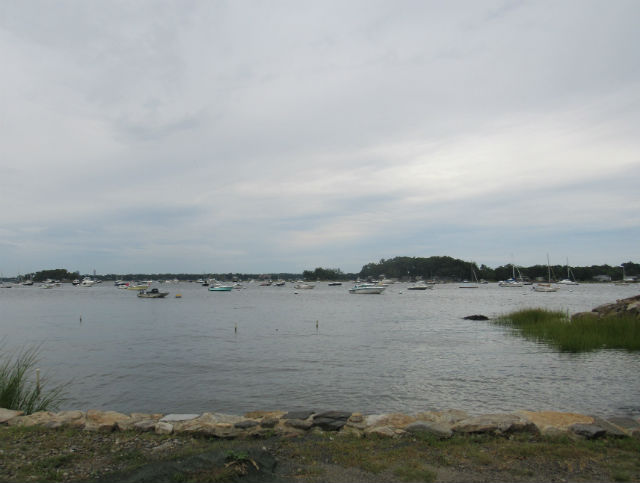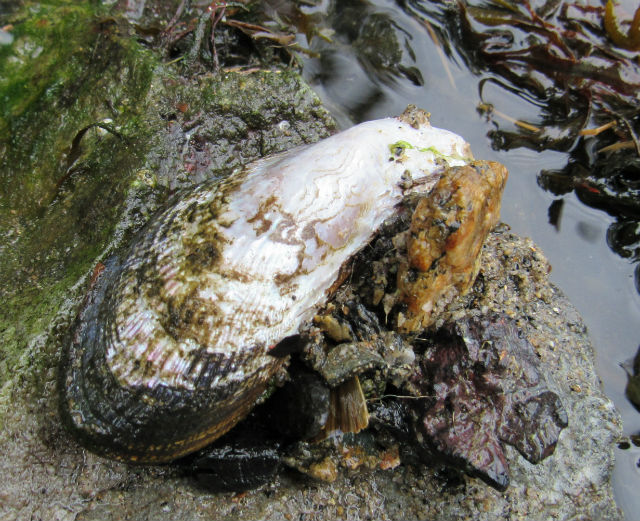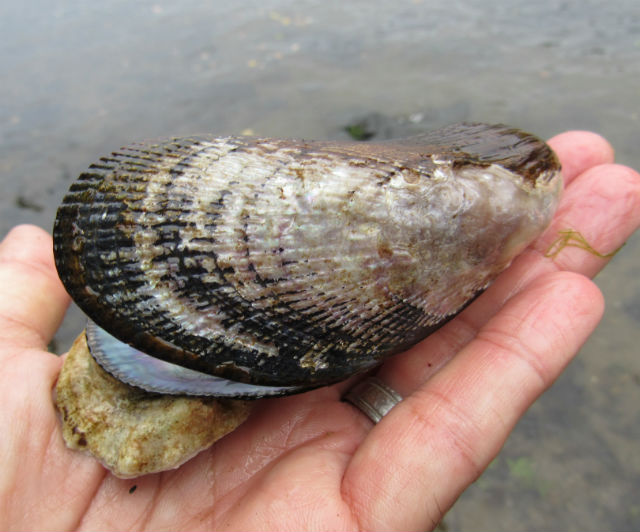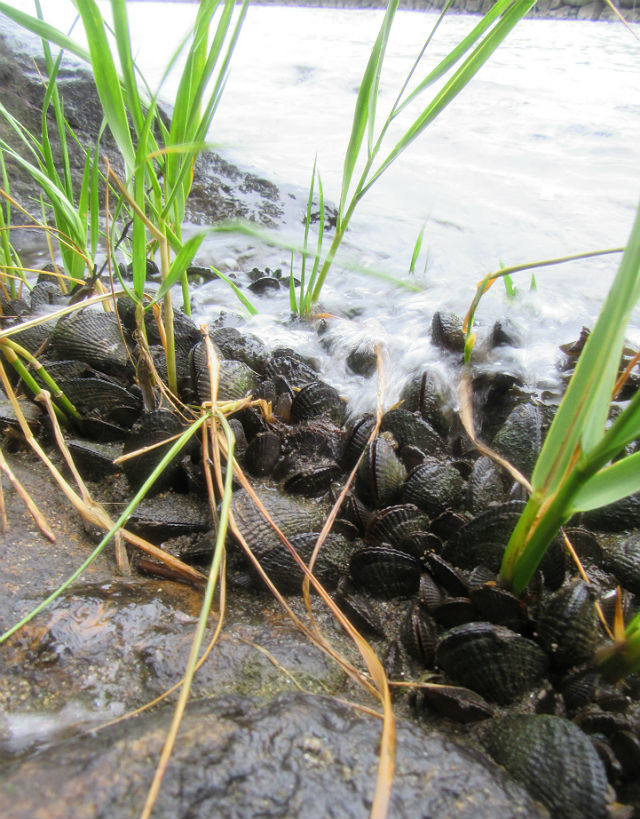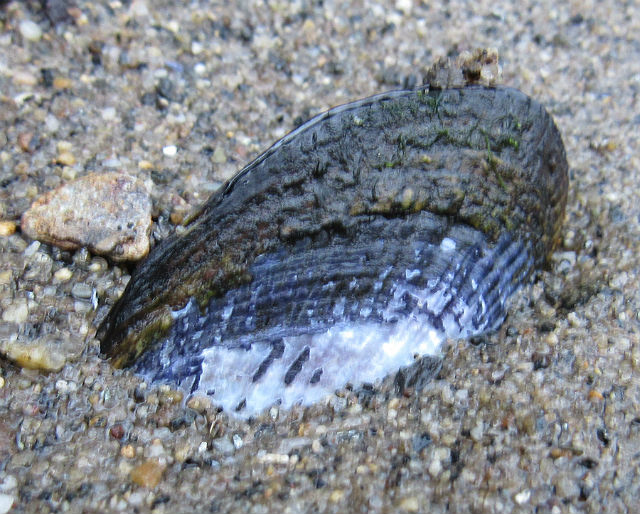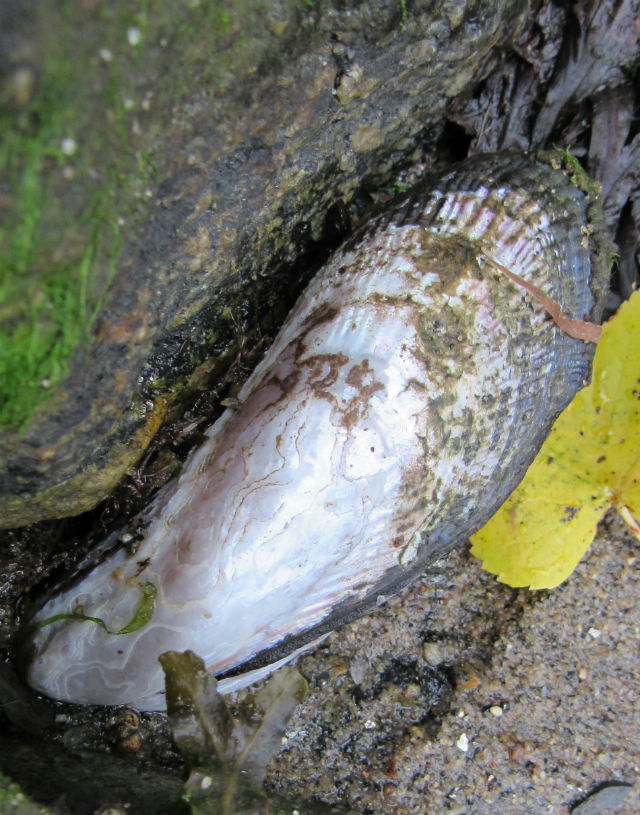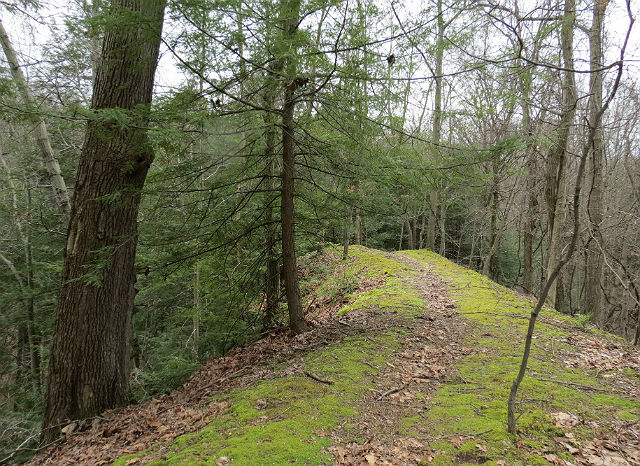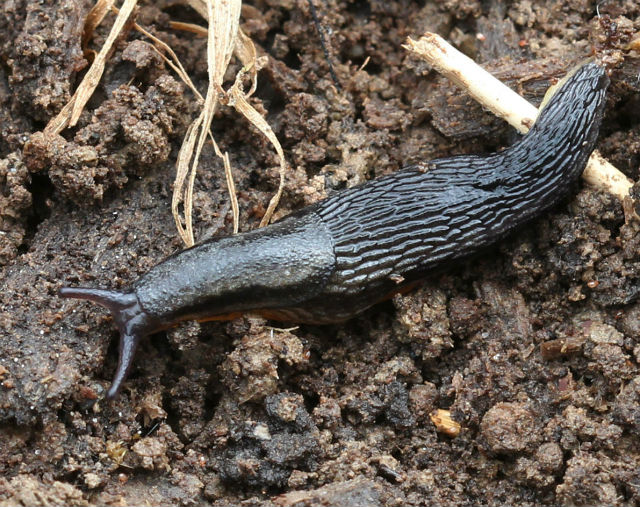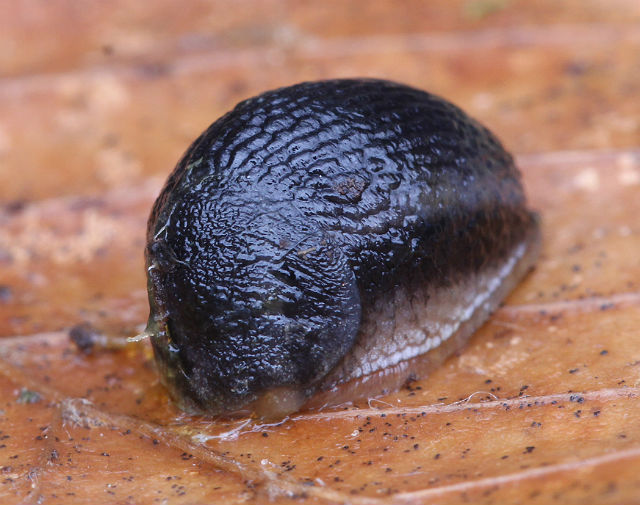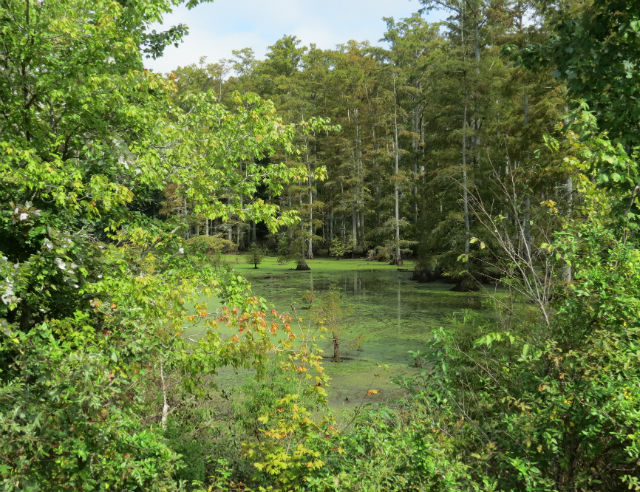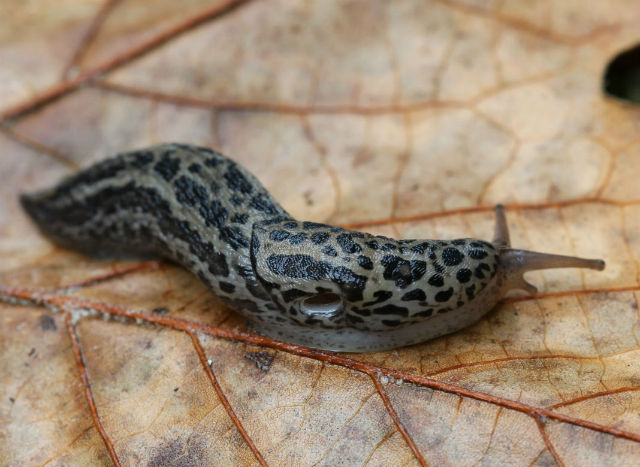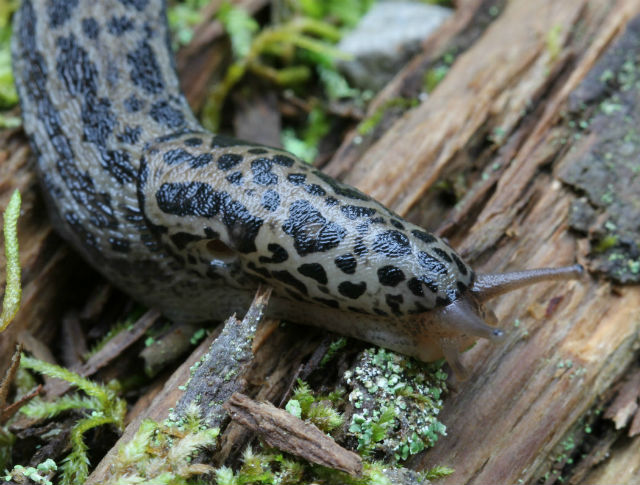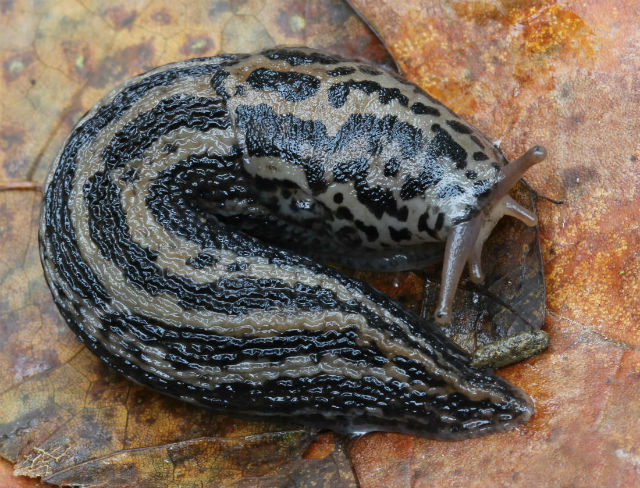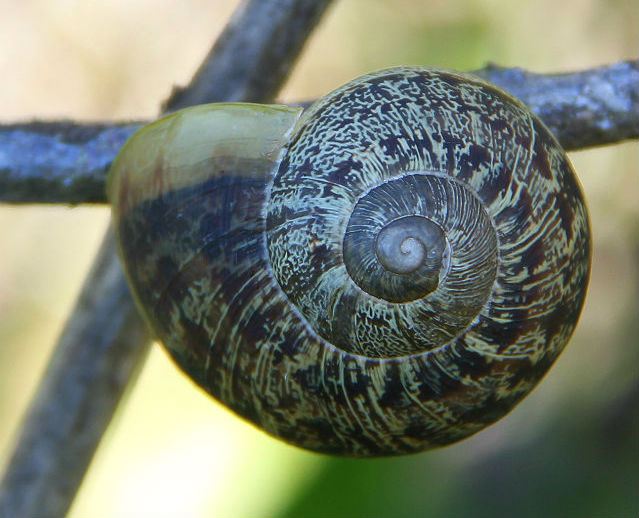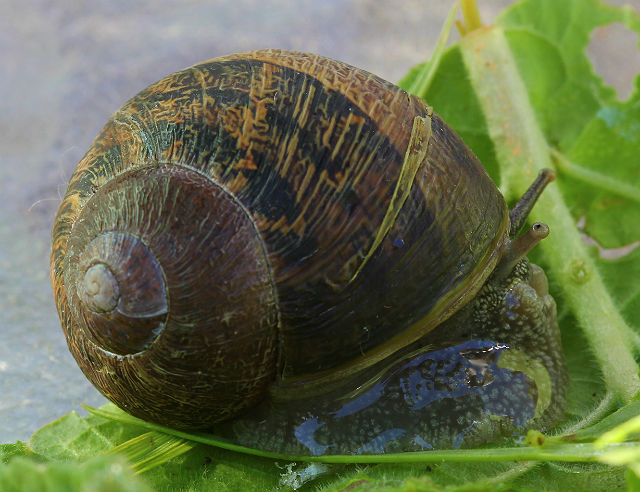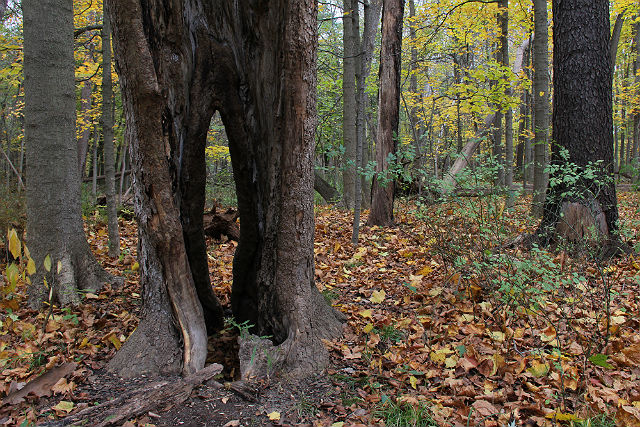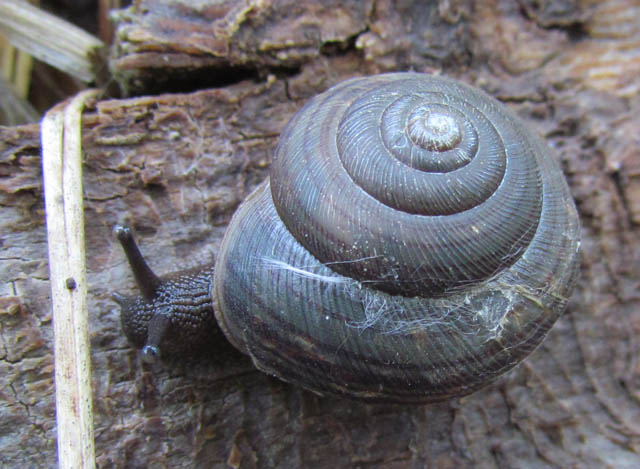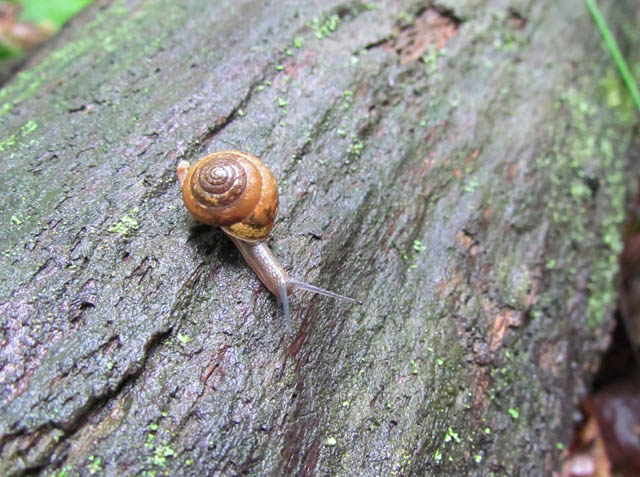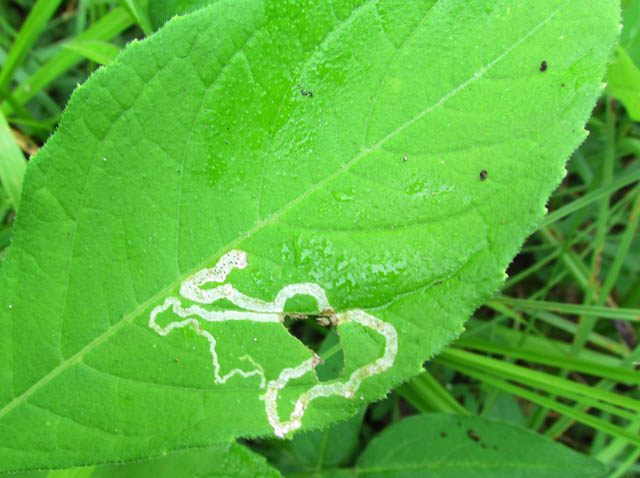While exploring a creek near Youngstown, Ohio, I came across this cool creature.
The Wavy-rayed Lampmussel occurs in small-to-medium sized shallow streams in and near riffles with good current. It rarely occurs in rivers. Its substrate of preference is sand and/or gravel.
Its shell color ranges from yellow to yellowish green with numerous thin, wavy green rays. It can reach four inches in width and can live up to 20 years. Like all mussels, this species filters water to find food, such as bacteria and algae.
Mussels in general are rather sedentary, although they may move in response to changing water levels and conditions. Mussels insert their “foot” (seen here inside of shell) into the sand or gravel and pull themselves forward, inching their way along the creek bottom.
Belonging to a group known as bivalves, this mollusc is completely enclosed by a shell made of two valves. A hinge ligament joins the two halves of the shell together and large adductor muscles between the two valves hold them closed.
Mussel larvae are parasitic and must attach to a fish host, where they consume nutrients from the fish body until they transform into juvenile mussels and drop off.
The Wavy-rayed Lampmussel’s fish hosts are the Largemouth Bass and Smallmouth Bass. The presence of fish hosts is one of the key features for an area to support a healthy mussel population.
In turn, mussels are ecological indicators. Their presence in a water body usually indicates good water quality.

